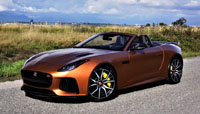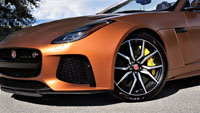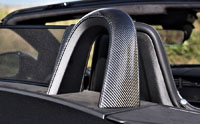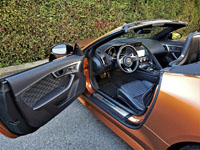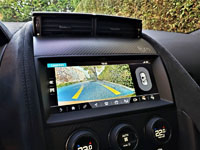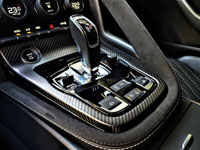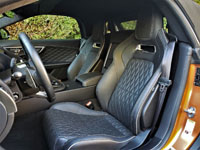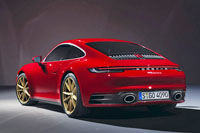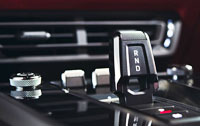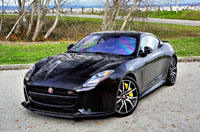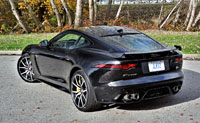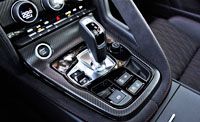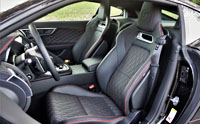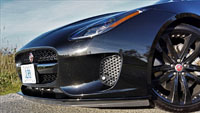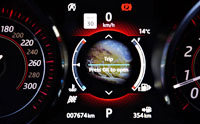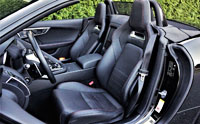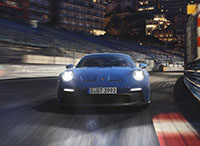
Were you expecting a wallflower? The new 2022 GT3 won’t have any issues standing out in a crowd, albeit not as sensationally supercar-like as the now discontinued GT2 (don’t worry, a new one is on the way). Let’s just agree that no one will mistake it for a run-of-the-mill 911 Carrera.
Porsche recently revealed the latest version of what many Porsche purists deem the ultimate 911, and of course the updated model has been getting its fair share of attention. When peering at it from your rearview mirror, a new dual vented carbon-fibre hood lets you know to move over and give it room to get by, at which point you’ll almost immediately get a glimpse of the new model’s massive swan-neck carbon-fibre rear wing and CFRP diffuser. In their default settings, the GT3’s aerodynamic add-ons improve downforce by 50 percent over a regular 911 coupe, but with a few adjustments you can get up to 150 percent more downforce when running at 200 km/h.
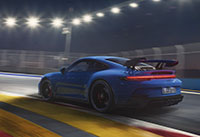
All of that speed comes via the same 4.0-litre horizontally opposed six-cylinder engine as the previous model, albeit making 10 ponies more for a considerable 502 horsepower, whereas its 346 lb-ft of torque remains unchanged. Possibly the best part of the GT3 story is that all that power comes without a turbocharger, making this model the only naturally aspirated 911 available.
Instead, size matters more, the GT3’s flat-six a full litre larger than the twin-turbo Carrera’s boxer, while some pretty fancy tech goes along for the ride, including six throttle butterflies for that just-noted 10-horsepower bump, plus an ultra-lofty rev limit of 9,000 rpm. That’s out of this world for a flat engine configuration, by the way, this layout normally strongest at the low end, but not designed for whirring away at stratospheric levels.
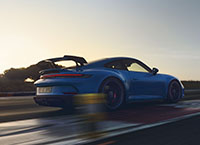
What’s more, the engine’s natural aspiration isn’t the GT3’s only unique differentiator amongst 911 models. Even more noticeable when driving is the manual model’s six-speed gearbox, compared to the majority of 911s that sport a seven-speed manual. Just like with all 911s, GT3 owners can opt for a seven-speed dual-clutch automated PDK gearbox with paddles, but it won’t cost you a penny more. Also relevant, the GT3’s PDK isn’t specifically related to new version introduced for all other (992 series) 911s, but instead comes from the old 2019 GT3, the reasoning behind its use being an 18-kilo drop in mass and extremely fast input response.
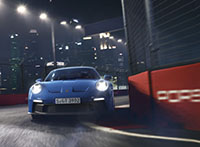
The six-speed manual isn’t new either, but gets shared with the fabulous 718 Spyder and 718 Cayman GT4. This gearbox is lightweight, features rev-matching to make non-pro drivers sound like the real deal, and is commonly praised for its smooth actuation. The six-speed manual is in fact so good that 68.7 percent of past Canadian GT3 buyers chose it over the PDK. This probably says more for the types of performance enthusiasts that choose the GT3 over other 911 models too, that person more appreciative of the art of driving over ease of use and/or sheer straight-line performance. As is always the case, the PDK is faster off the line than the manual, the GT3 with the autobox requiring a mere 3.4 seconds from zero to 100 km/h, with 200 km/h needing just 10.8 seconds.
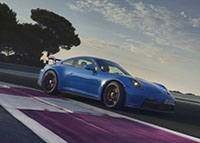
No matter the transmission choice, the GT3 comes standard with a wholly new double-wishbone front suspension design. The new front suspension was developed by Porsche’s sports car racing team for the Le Mans-winning 911 RSR, with the GT3 being its first application in a 911 production car. It allows for a more rigid spring setup with more camber stiffness, which better isolates the shocks from transverse forces that could otherwise upset forward momentum amid shifting mass. Overall, Porsche promises better handling.
Also upgraded, the GT3’s five-arm rear suspension now includes additional ball joints for the lower wishbones, plus spherical bushings and unique dampers. Porsche says it makes the new GT3 is a better track car, but this should also translate into a better daily driver, whether your commute is urban or on a curving rural road.
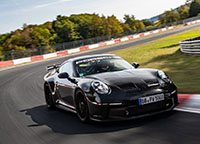
Additionally, the more responsive suspension setup comes mated to standard rear-wheel steering that make them rotate up to two degrees in the same or opposite direction, depending on whether the objective is high-speed stability or easing low-speed parking manoeuvres.
To scrub off speed from the former, the outgoing GT3’s already sizeable 380 mm front brake discs grow to 408 mm too, while weighing a significant 17-percent less. As for doing better with low-speed situations, such as rolling over big speed bumps or climbing steep driveways, Porsche has included a front axle lift system to keep the gorgeous carbon fibre front lip spoiler from dragging on the pavement.
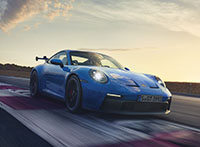
That lip spoiler, as well as the new hood, the massive wing and the rear spoiler already mentioned, are not the only exterior features produced from carbon fibre reinforced plastic, incidentally. Yet more CFRP body panels include the rear fenders and, optionally, the roof.
“Road-approved circuit rubber” is also available, while GT3 buyers can add a rear roll cage too, by opting for the Clubsport package (not available in all markets). The all-new battery requires no extra investment, however. It hits the scales after a 10-kilo diet compared to the one used in the old GT3, with all of the new model’s weight-saving improvements and increased engine performance adding up to a superb 2.8 kg/PS power-to-weight ratio.

Deleting the rear wing can eliminate even more weight, but I can’t see this being a popular choice unless planning to install an even larger one. Still, it’s possible more conservative buyers find it a bit much for everyday driving, so Porsche has provided the option to trade it for the regular 911’s power-adjustable spoiler via a Touring package.
As for GT3 interior upgrades, they continue to include plenty of Alcantara psuede on the steering wheel rim, sport seats, and elsewhere, plus Porsche’s usual “GT3” branding.
The new 2022 GT3 is now available to order, with first deliveries expected in the fall of this year.
The new 911 GT3: Time is Precious (2:35):
The New 911 GT3 at the Nürburgring (1:33):
The New 911 GT3: Onboard at the Nordschleife (7:33):
Story credits: Trevor Hofmann
Photo credits: Porsche

